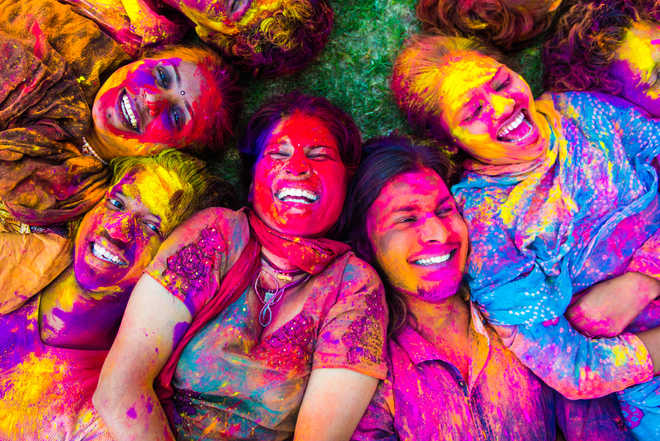
Dr R.K. Singal
Holi is the festival of colours. Along with fond memories of gulal, rain dancing, pichkaris, you must also have experienced nightmares of skin, hair and eye allergies. But playing with colours, especially artificial colours which are highly structured with polymers that are difficult to decompose biologically and prove hazardous to the environment (both soil and water). These colours are prepared from acids, mica, glass powder, alkalis, dolomite, chalk powder which are very harmful to the body.
Therefore experts say it can affect the kidney, reduce mental growth in children, affects the respiratory system and the mercury in the colours can have an adverse effect on eyes. Hence, if you are playing Holi this season, make sure you use natural colours and also practise safe Holi to make the most of it.
After knowing the consequences of playing with these hazardous colours, people still love to get drenched with colours, recent studies have found safety issues with all three forms in which the Holi colours are produced: pastes, dry colours and water colours. Use of artificial colours is a serious threat to the body because it affects the skin, hair, eyes, lungs and some other organs. The previous motif of playing Holi with natural colours, to get into the theme of colorful aura has vanished. One should, actually, avoid using irrelevant and harmful products like oil paints, petrol, mud and other chemical based products.
Bane of colours
Skin damage is the most common of all. People with delicate skin, eczema or atopic dermatitis if exposed to artificial colours may suffer from contact dermatitis.
If applied to hair it loses its natural colour, texture, scalp itching occurs resulting in dandruff, split-ends etc.
Eyes are also vulnerable to artificial colours. Problems may be faced like conjunctivitis, allergies. Silica used in the colours cause lung- infection.
Another growing trend is, people throwing small plastic bags and balloons filled with water on each other as a means of fun. The remains of these plastics lead to environmental pollution. But on a more serious note, what if someone gets hurt externally? One’s way of enjoyment should not have harmful consequences on others. Wastage of water is a normal scenario in these days. Ironically we owe so much to the “Save Water, Save Life” slogan but literally it does take huge amount of water to remove artificial colours. So why not play with dry eco-friendly colours and enjoy this colourful festival with some grace and elegance.
Well the answer isn’t to restrain yourself from playing Holi but putting in account (for yourself and for your known ones) how to play a swatch, healthy and eco-friendly Holi.
So this season, let’s celebrate this beautiful, aromatic, colorful festival in an elegant, delightful and swachh manner.
— The writer is Director BLK Super Speciality Hospital, New Delhi
Box
Make your own hues
It is recommended to use homemade colours. Natural is best! Make the colours at home, like they used to in the good old days. Mix the following natural colour producing ingredients by making a paste and mixing with besan or gramflour.
Box 2
Colours of joy
The heavy metals found in Holi colours can harm the immunity system of a person. Lead is the most dangerous of all heavy metals found in holi colours. It can affect the physical and mental growth even in small quantities and can have serious effects on the nervous and reproductive system. If pregnant women are exposed to colours containing lead it can even harm her foetus.
Red colour is likely to contain mercury which is very toxic metal and enters the body through skin and inhalation. It has the potential to pass through the brain and placenta and affect the sensitive organs like kidney, liver etc.
Blue colour generally has copper and affects the eyes, respiratory system and other important functions.
It is said that the more colourful the product is, the more harm it does to the body.
Box 3
Play safe
Take adequate precautions to avoid the side effects and keep our skin and scalp free of any irritation.
• As the skin tends to lose its moisture being under the sun for long hours, it is necessary to keep it well-hydrated. Moisturise your body, including the hands and feet and apply a good amount of sunscreen on the exposed areas.
• Oiling of scalp or a gentle massage with lemon juice is helpful as it does not allow colour to settle in the scalp and can be washed off easily. To avoid damage to hair, its always better to tie it.
• It’s advisable to wear full sleeves, light coloured clothing with adequate footwear.
• Nails need to be well-clipped to avoid colour getting into the nail bed.



























